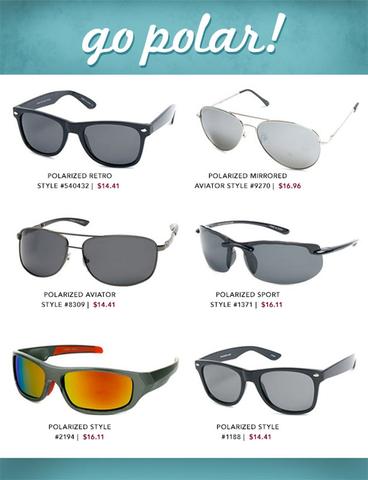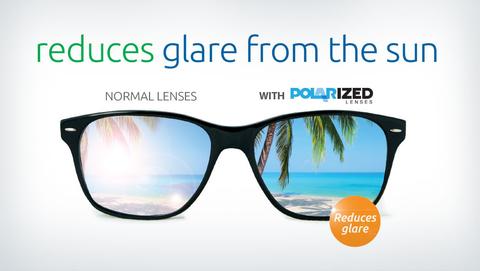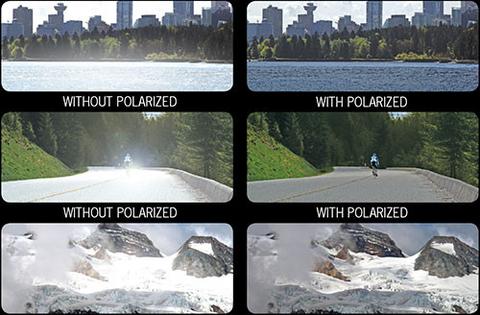How do polarized sunglasses really work?
 Ultra violet rays can be quite damaging to the eyes. As a result, proper eye protection is very essential. When shopping for the right eye wear one has to make a decision from the many options available. Sunglasses come in many designs, models and have different features. One should also be prepared to pay a good price as most sunglasses tend to be quite pricy.
Ultra violet rays can be quite damaging to the eyes. As a result, proper eye protection is very essential. When shopping for the right eye wear one has to make a decision from the many options available. Sunglasses come in many designs, models and have different features. One should also be prepared to pay a good price as most sunglasses tend to be quite pricy.
Polarized sunglasses have become more common and trendy in the recent fashion world. Polarized lens are a bit expensive as compared to normal protective sunglasses. They are specially made to offer protection against the dangerous UV rays is perfect for most outdoor activities. Amidst being popular and trendy, most people do not understand how they really work. So, how do polarized lens really work?
Sunlight rays are always reflected or absorbed in various ways and directions. They may be reflected on horizontal surfaces such as water, land or car hoods. These surfaces often produce a back reflection which has a relatively strong glare. Ground interference tends to cause more interference with vision on pavements or waters.
Normal sunglasses will provide the necessary protection against both horizontal and vertical rays. They will not however, remove the glare that comes with reflected rays.
This is where polarized lens come in. they have an in-built laminated filter, which will only allow vertical rays of light to pass through. When in a water surface, a person with polarized lens will be able to see through the water surface, as opposed to a reflection of the sky.
Who can use polarized lenses?

People who work or are always around or in water bodies are most suited for using the polarized lens. This includes fishermen, surfers, captains and general boaters. This will enable them to view deeper into the water surface for any obstacles, wave currents or fish.
When driving, especially during the summer, one may also opt for polarized lens sunglasses. This is due to the horizontal light rays which are always refracted from the road surface.
Also, when taking part in an activity which involves rapid changing of light condition, one may require polarized sunglasses. Such include hiking and hunting in a heavy canopy forest.
Advantages of using polarized lens;
- They improve the clarity of vision and the contrast of ground level objects.
- They enhance comfort. This enables one to be able to see objects in bright condition better.
- They aid in diminishing glares and light reflections.
- They minimize eye strains. Frequent glares are often known to cause eye fatigue.
- Aids in viewing colors effectively.
Disadvantages.
- Polarized lenses are more expensive when compared to the regular lenses.
- It is difficult to see LED screens when having polarized lenses. This is because images will disappear at certain angles. As a result pilots and heavy machine operators are not advice to use polarized lenses.
- They are not suitable for skiing as contrast in certain light conditions may be compromised with.
Polarized sunglasses provide the necessary protection from UV light. This does not necessarily mean that they offer enhanced protection from direct UV rays.
Before deciding on whether to get polarized sunglasses or not, it is best to consult with a doctor or optician.
How it works.

Polarized lens are special since they are coated with a chemical film which reduces glare. Polarized lenses neutralize the glare hence one is able to view objects better and more clear. The chemical film is designed to absorb the horizontal light waves while at the same time permitting the vertical rays to pass through it. Light can only travel in one direction in a polarized lenses hence the glare is removed.
Types of polarized lenses.
0.75 mm lenses
These are made from thin sheets of film and are great when one needs no worries concerning impact resistance. They are recommended for casual sporting activities such a s golf and running.
1.1 mm lenses.
They are made out of sheets of film that are thicker. They are designed to offer more impact resistance and they contain the same polarizing layer as the .75 mm lenses. They thickness does not offer a higher level of polarization or better glare elimination. They are also more expensive than the .75 mm lenses.
How to tell if lenses are really polarized.

Most sunglasses are said to be polarized while in reality, they are not. Good thing is that one can easily check to see if they are polarized or not using a simple method.
Find the nearest reflective surface such as a pavement or a car window.
Hold the sunglasses to view the surface through the lens.
In slow motion, rotate the sunglasses at a 90 degree angle and view again.
Check to see whether the reflective glare of the surface has increased or diminished.
If the sunglasses are really polarized, you should be able to see a consideration reduction in the amount of glare.
You can now purchase the sunglasses as you please.




